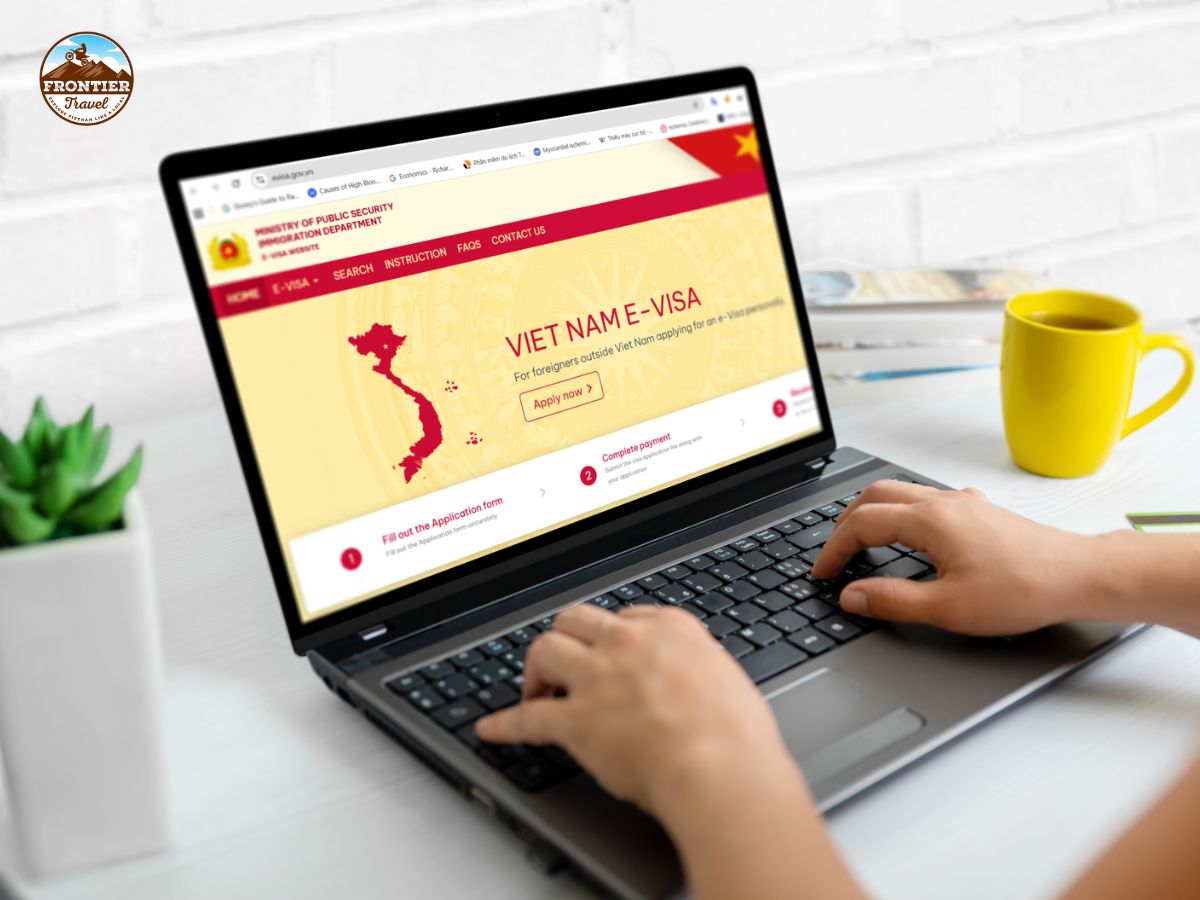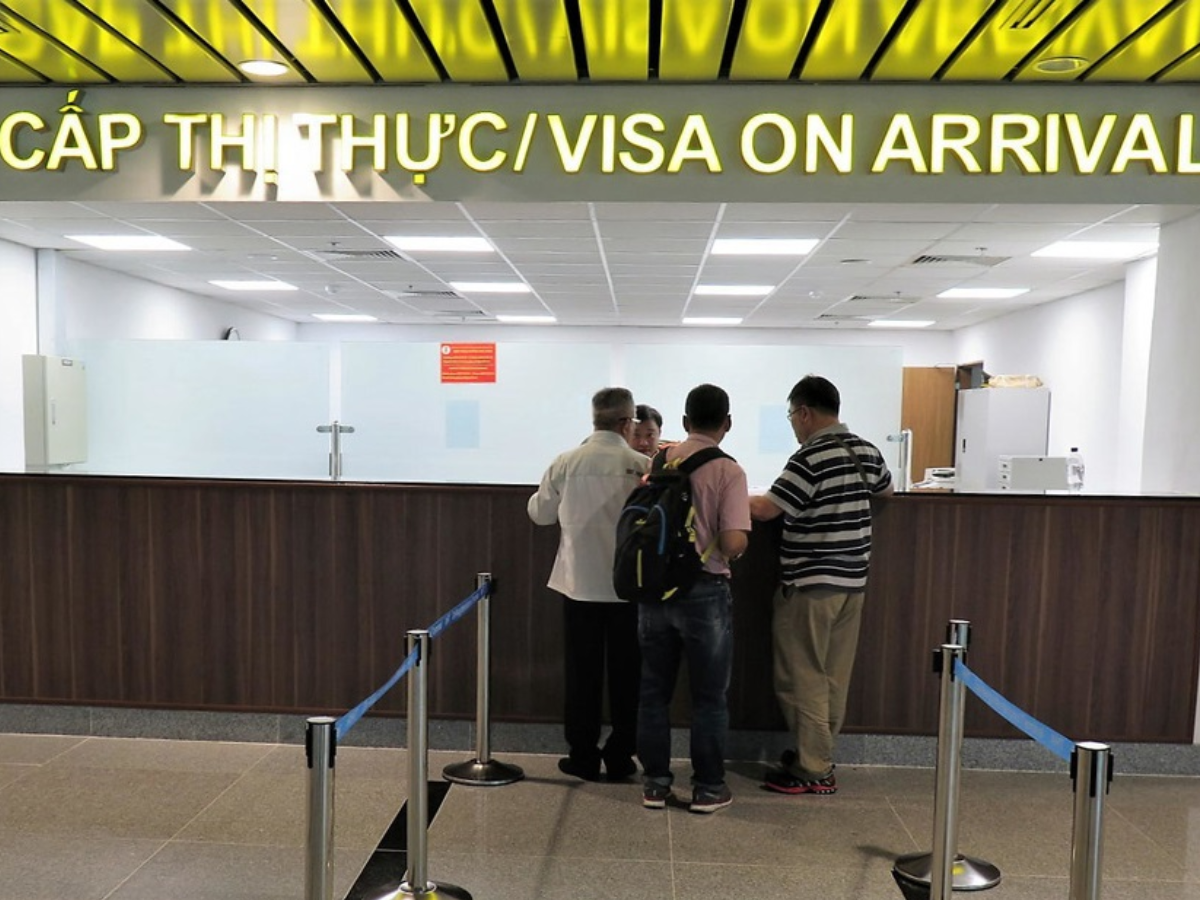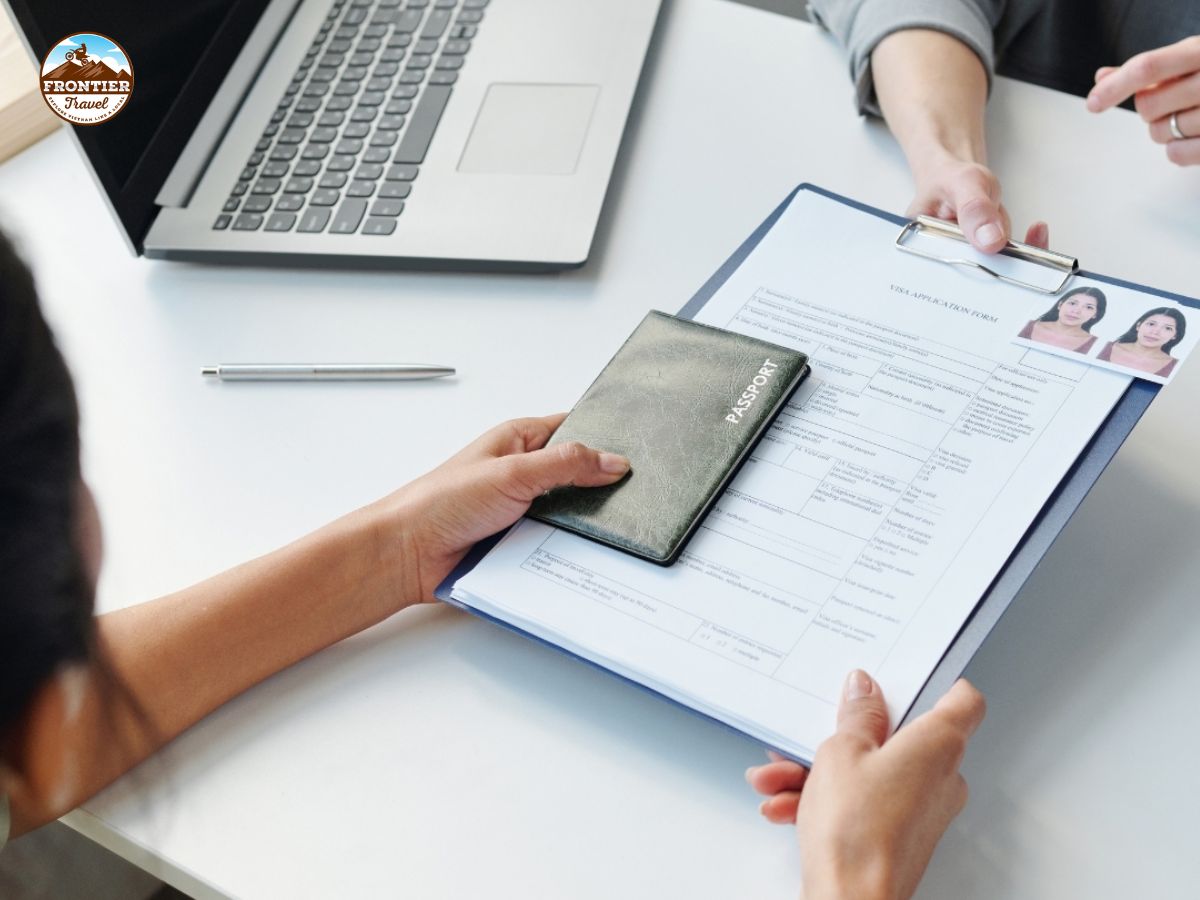The Vietnam visa for US citizens is a mandatory entry document for most American travelers. In this guide, Frontier Travel Vietnam will help you find updated details for 2026, including fees and how to apply online from the United States.

1. Do US citizens need a visa to enter Vietnam?
Yes. US citizens need a visa to travel to Vietnam because the United States is not among the countries eligible for visa exemption under international agreements or Vietnam’s unilateral policies.
Therefore, if you are a US citizen planning to visit Vietnam for tourism, family visits, or short-term business, you must complete the proper visa application before entering the country.
2. What documents are required for a Vietnam visa application for US citizens?
Basically, the documents required for a Vietnam visa for US citizens usually include the following:
Original passport with at least 6 months of validity.
Passport-sized photo (4×6 cm) with a white background, without glasses.
Visa application form, which can be the NA1 form, the online e-Visa form, or the Visa Approval Letter for Visa on Arrival (VOA).
Some additional documents, such as a printed Visa Approval Letter, return or onward flight tickets, proof of accommodation, etc.
3. How to get a visa for Vietnam?
US citizens can apply for a Vietnam visa in three ways: online e-Visa, Visa on Arrival at the airport or by submitting an application directly at the nearest Vietnamese embassy or consulate.
3.1. How can US citizens get a Vietnam e-Visa?
To apply for a Vietnam e-Visa, US citizens need to access the official portal of the Government of Vietnam at https://evisa.gov.vn/, complete the application form, make the payment, and wait to receive the e-Visa via email. The e-Visa is valid for up to 90 days and can be used for a single or multiple entries.

The detailed steps are as follows:
Step 1: Access the official website: Go to the Vietnam Immigration Department’s e-Visa portal at https://evisa.gov.vn.
Step 2: Start your application: Click the “Apply Now” button to begin the e-Visa application process.
Step 3: Confirm compliance and prepare documents: Make sure you have read all instructions, comply with Vietnamese laws, and have prepared the necessary documents.
Step 4: Fill out the online application form:
Upload a passport photo and a scanned copy of your passport’s personal information page.
Provide personal details, passport information, and contact information.
Fill in employment details, travel plans, estimated expenses, and insurance information if required.
Review your information: Carefully check all details to ensure they are accurate before submitting the application.
Step 5: Pay the e-Visa fee: Provide payment information or scan the QR code to complete the e-Visa fee payment. Confirm the payment with an OTP if required.
Step 6: Receive your e-Visa: After successful payment, you will receive a confirmation. The e-Visa is usually processed within 3–5 working days and will be sent to your email.
Some important notes when applying for a Vietnam e-Visa
To be eligible for a Vietnam e-Visa, applicants must meet the following requirements:
Valid travel documents: Applicants must possess a valid passport or international travel document that remains valid for the entire duration of their intended stay in Vietnam.
Compliance with Vietnamese law: Applicants must not fall under any of the prohibited cases specified in Article 21 of the Law on Entry, Exit, Transit, and Residence of Foreigners in Vietnam.
>>> See the detailed cases below that are not allowed to enter
3.2. How can US citizens obtain a Vietnam Visa on Arrival (VOA)?
To apply for a Visa on Arrival (VOA), you need to obtain an Approval Letter issued by the Vietnam Immigration Department before your trip. Once approved, you will receive the visa directly at the airport upon arrival in Vietnam.

The detailed procedure is as follows:
Step 1: Apply for the visa approval letter
Foreigners cannot submit their applications directly to the Vietnam Immigration Department, so they need to contact a visa service provider or a sponsor in Vietnam.
Then, you should prepare all the necessary documents, which may include:
Visa Approval Letter: This document is issued by the Vietnam Immigration Department or an authorized visa-issuing agency. It must clearly state the applicant’s full name, passport number, nationality, visa type (single or multiple entry), validity period (1 or 3 months), and the international airport where the visa will be received (HAN, SGN, DAD, CXR, PQC, HUI, VDH, or VCA).
NA1 Form – Visa Application: This is the official form prescribed by the Vietnam Immigration Department. Applicants must accurately fill in personal information, approval letter details, purpose of the visit (tourism, business, family visit, or investment), and the intended duration of stay in Vietnam.
Photos: Two passport-sized photos (4×6 cm) with a white background, taken within the last six months. Applicants must not wear glasses or hats in the photos.
Passport: The original passport must be valid for at least six months from the intended date of entry and contain at least two blank pages for visa stamping and entry/exit endorsements.
Printed Visa Approval Letter: The document should be clearly printed and legible. Travelers are advised to carry a backup copy in case the original is lost or damaged.
Return or Onward Flight Ticket: Immigration officers may request to see a confirmed return or onward flight ticket to verify travel plans.
Proof of Accommodation: While not always required, providing a hotel booking confirmation or the contact information of a host in Vietnam can help facilitate the immigration process.
Step 2: Submit your application at the Visa counter
Present your Visa Approval Letter along with all required documents. Pay the visa stamping fee in cash and carefully check all personal information before the immigration officer processes your application.
Step 3: Receive your Visa and complete the entry procedure
After submitting your documents and payment, the immigration officer will stamp the visa into your passport. Verify the visa type, validity period, and personal information. Once this process is completed, you are officially admitted into Vietnam.
Some important notes for US citizens applying for a Vietnam visa on Arrival (VOA):
The Visa Approval Letter issued by the Vietnam Immigration Department is usually processed within 24–48 working hours.
The passport must be valid for at least 6 months from the date of entry.
Only a valid Approval Letter issued by the Vietnam Immigration Department is accepted.
Entry must be by air through one of Vietnam’s international airports, including: Noi Bai, Tan Son Nhat, Da Nang, Cam Ranh, Can Tho, Phu Quoc, Lien Khuong, or Cat Bi.
Applicants must not be on the immigration blacklist.
3.3. How can US citizens obtain a Vietnam visa through the Embassy/Consulate?
Embassy/Consulate Visa is the traditional method of obtaining a visa, where applicants must visit the Vietnamese diplomatic mission in their country to submit their application, wait for approval, and receive the visa stamped directly in their passport before traveling to Vietnam.

To apply for a Vietnam visa for US citizens, follow the steps below:
Step 1: Prepare the required documents
Download the visa application form from the official website of the Vietnam Embassy or Consulate and complete it with your personal information, purpose of visit, and intended duration of stay. Prepare your original passport valid for at least 6 months, two passport-sized photos (4×6 cm, white background), an invitation letter or other supporting documents if needed, and any additional documents requested. Also, have the visa fee ready according to the instructions provided by the Embassy or Consulate.
Step 2: Submit your visa application
Submit your completed application directly at the nearest Vietnam Embassy or Consulate. Some offices may allow submission by mail or courier service, so verify the accepted method before applying.
Step 3: Pay the visa fee
Pay the visa fee according to the Embassy’s or Consulate’s instructions. Depending on the location, payment can typically be made in cash, by bank transfer, or by credit card, either when submitting the application or after the visa is approved.
Step 4: Wait for processing
Visa processing usually takes 5–10 working days but may vary depending on the type of visa and the processing office. Special applications or visas requiring additional verification may take longer.
Step 5: Receive your visa
Once approved, you will receive your passport with the visa. The visa can be collected directly at the Embassy or Consulate or sent via mail if arranged in advance.
Step 6: Verify the visa information
Carefully check all information on your visa, including your full name, visa type, validity period, and number of entries allowed. If any errors are found, contact the issuing office immediately for correction.
Some important notes when applying for a Embassy/Consulate Visa:
Carefully review all personal information printed on your Vietnam tourist visa for US citizens. If you find any errors, contact the Embassy immediately for correction.
Your visa may be issued with a validity period and number of entries not exceeding those stated in the approval decision issued by the competent Vietnamese authority. US citizens may be granted multiple visas with a maximum validity of one year.
The validity period of the Vietnam visa for US citizens is indicated on the visa itself. You may only enter Vietnam from the entry date printed on the visa and must leave the country before the expiration date.
The Embassy reserves the right to request additional information or documents from applicants and to refuse any visa application without providing a reason.
Contact Information for the Vietnamese Embassy in the United States:
Working hours: 9:00 AM – 12:00 PM and 2:00 PM – 4:30 PM, Monday to Friday, except on Vietnamese and U.S. public holidays.
Address: 1233 20th Street NW, Suite 400, Washington DC, 20036.
4. How much is the Vietnam visa fee?
The cost of a tourist visa or e‑Visa to Vietnam for US citizens is as follows:
For an e‑Visa: The official fee is USD 25 for a single entry and USD 50 for multiple entries.
For a visa stamped at the Embassy or Consulate: The cost may be higher depending on the duration and number of entries.
In summary, obtaining a Vietnam visa 2026 for US citizens is a straightforward process with several options, including the online eVisa, Visa on Arrival, or applying directly at the Vietnamese Embassy or Consulate. Each method offers different levels of convenience and processing times depending on your travel plans.
To ensure a smooth journey, carefully prepare all required documents, verify your visa details and apply through official government channels. With proper preparation, your trip to Vietnam in 2026 will start with ease and confidence.
See more:
>>> Vietnam Travel Guide 2026: What Every Traveler Should Know (part 1)
>>> Vietnam Travel Guide 2026: What Every Traveler Should Know (part 2)
>>> How To Travel In Vietnam By Motorcycle Without A License







